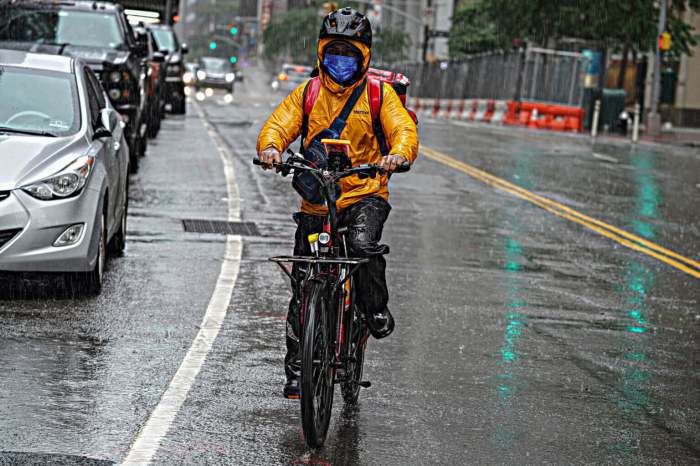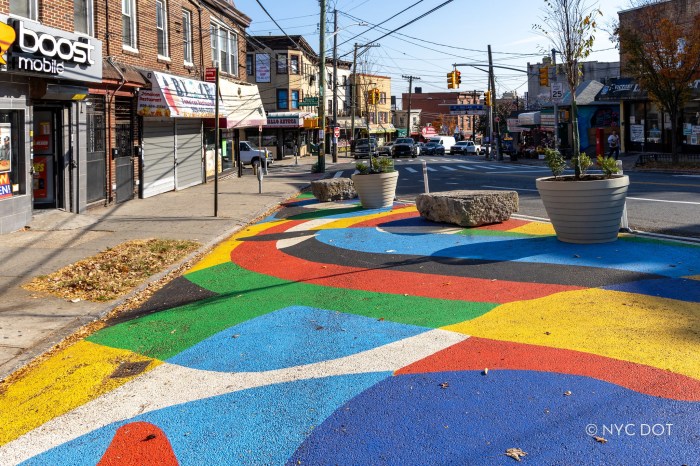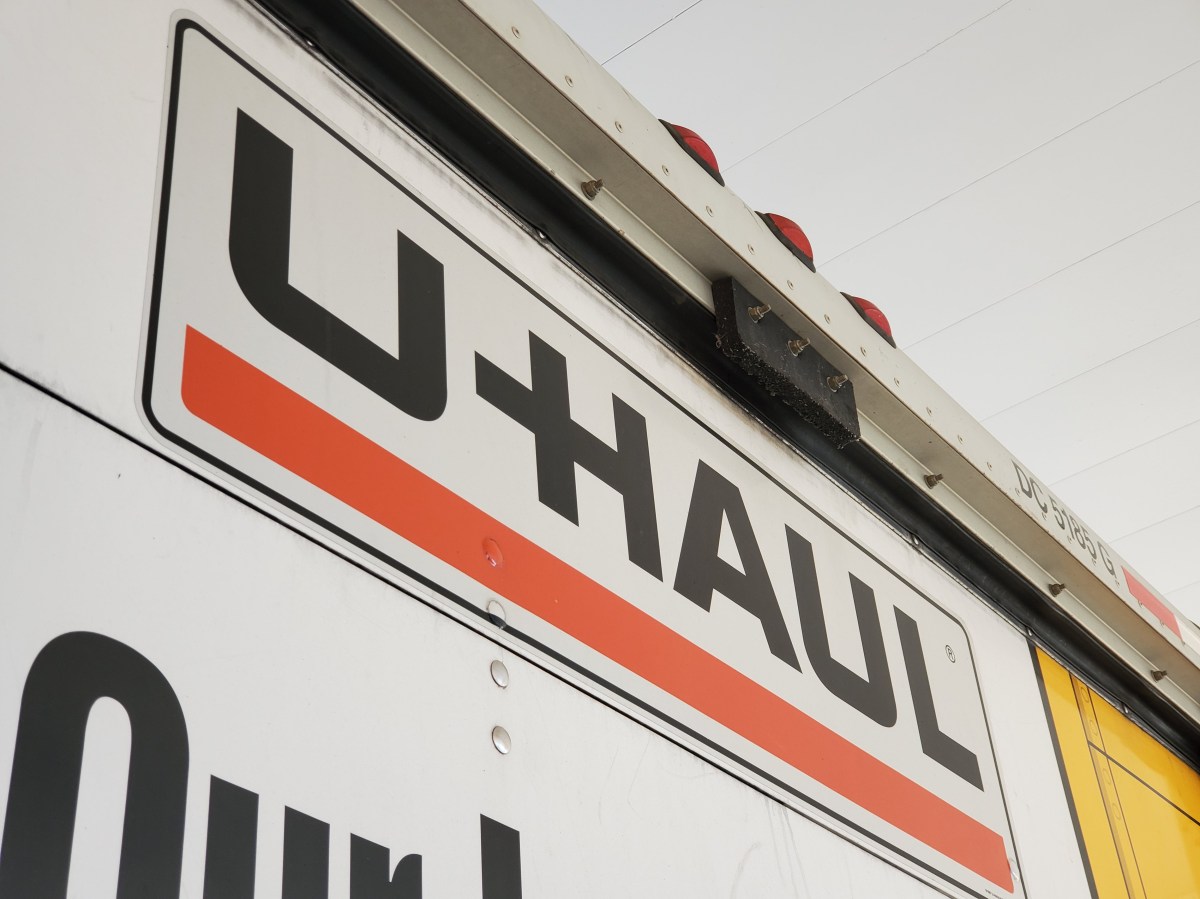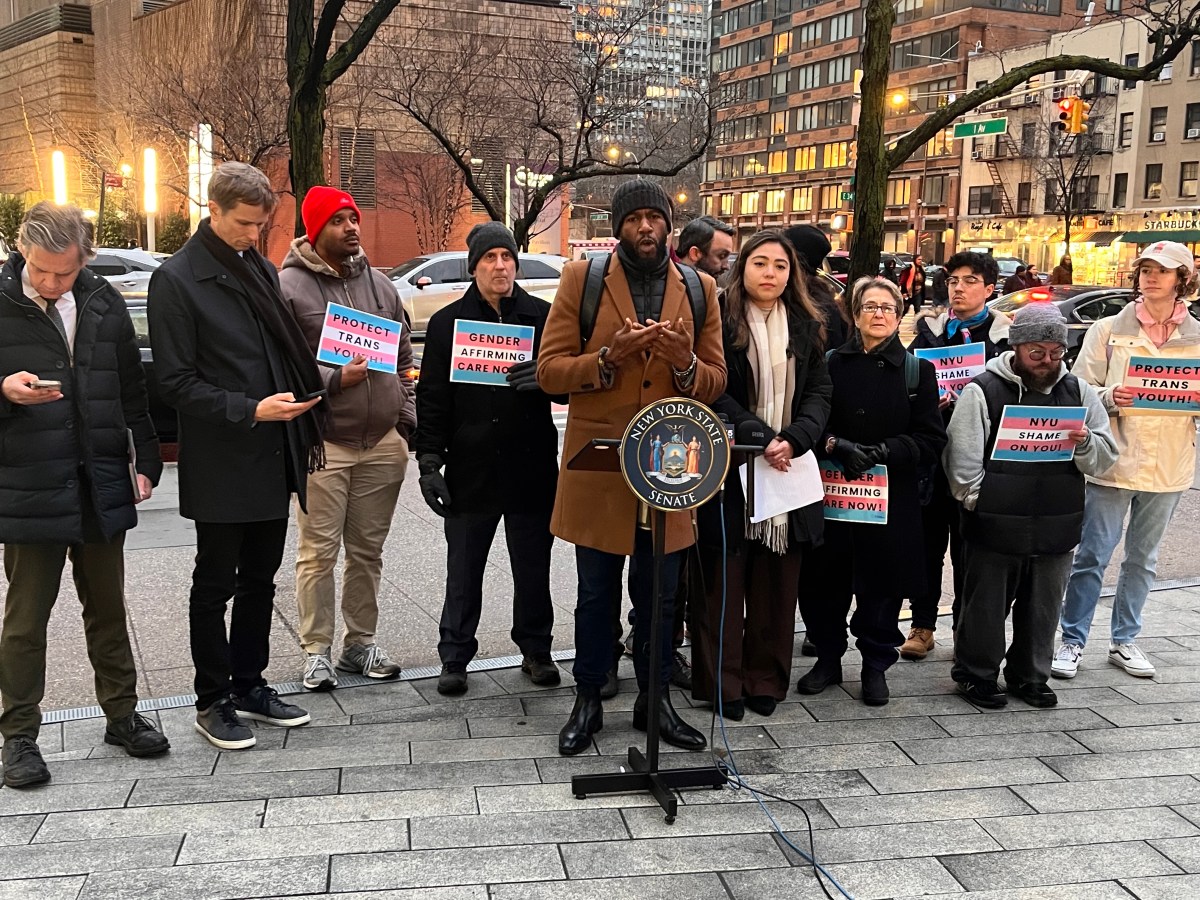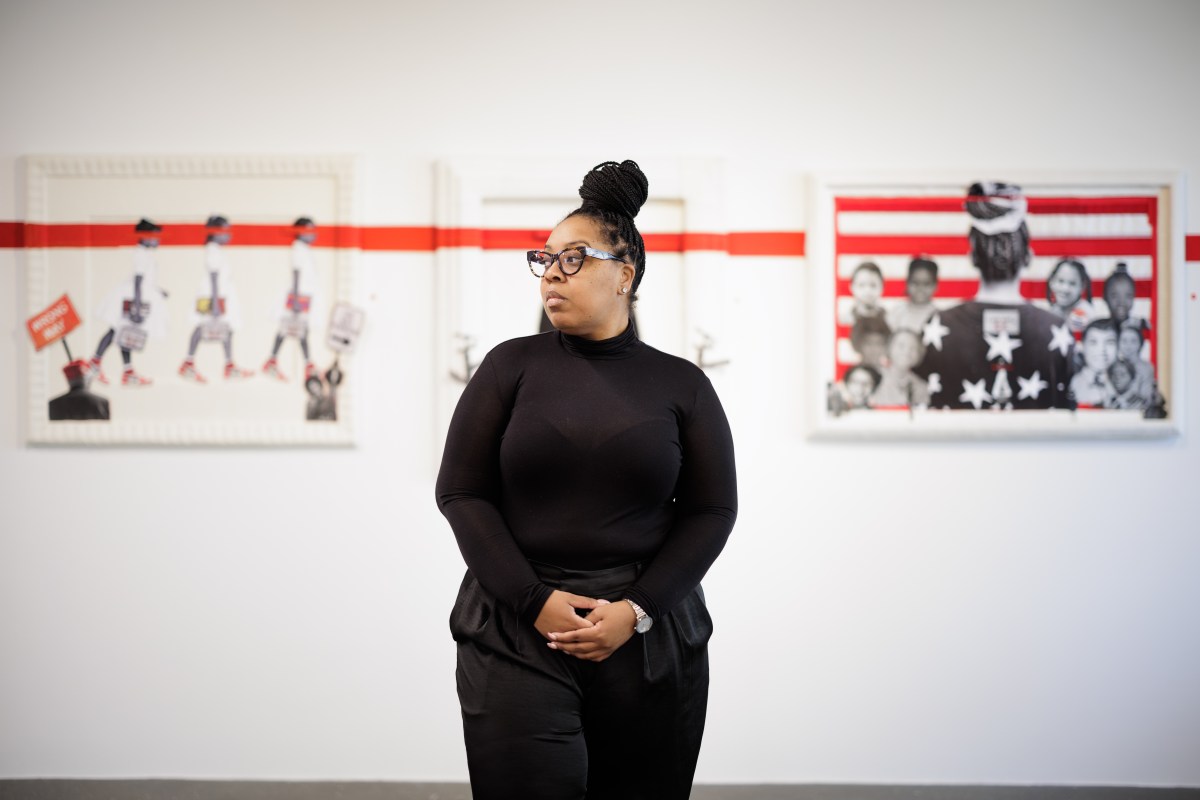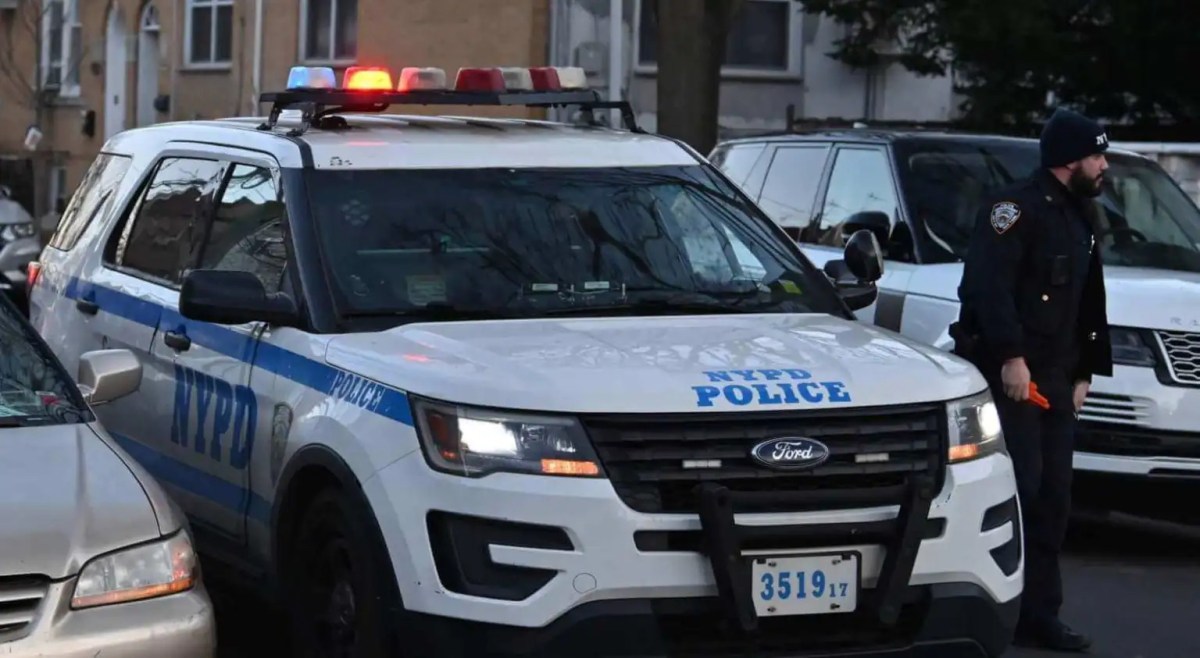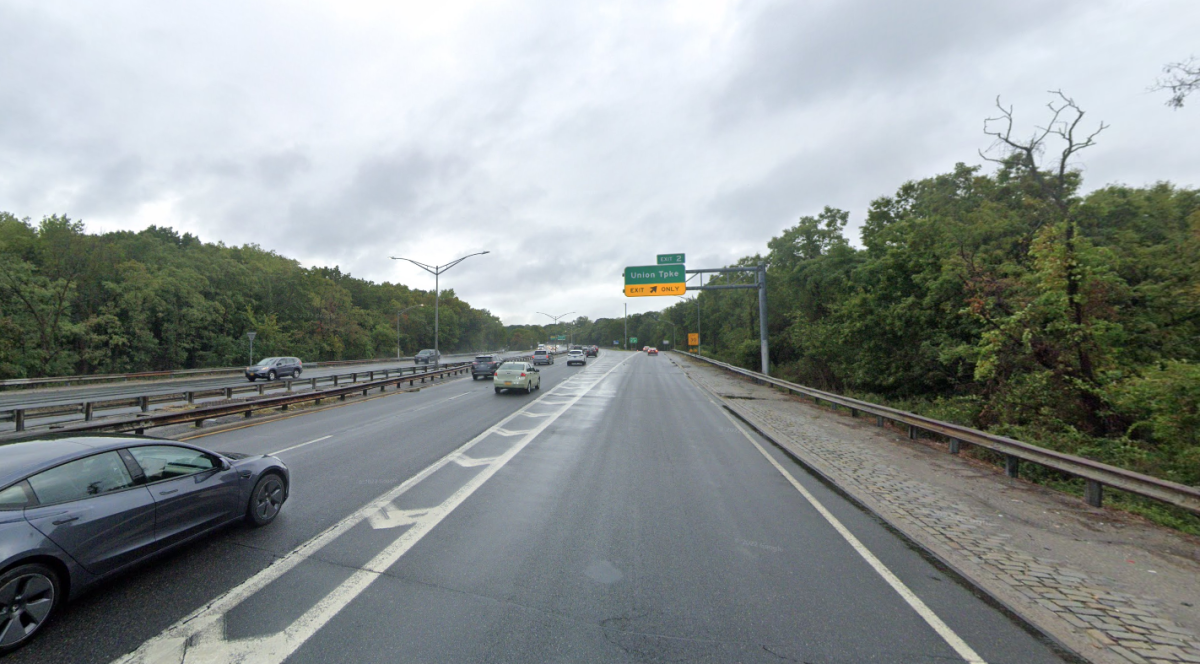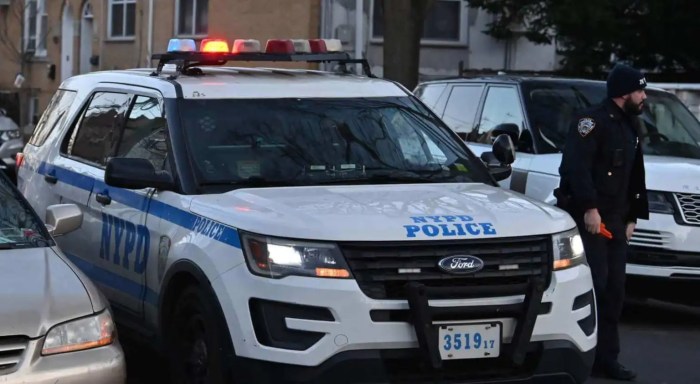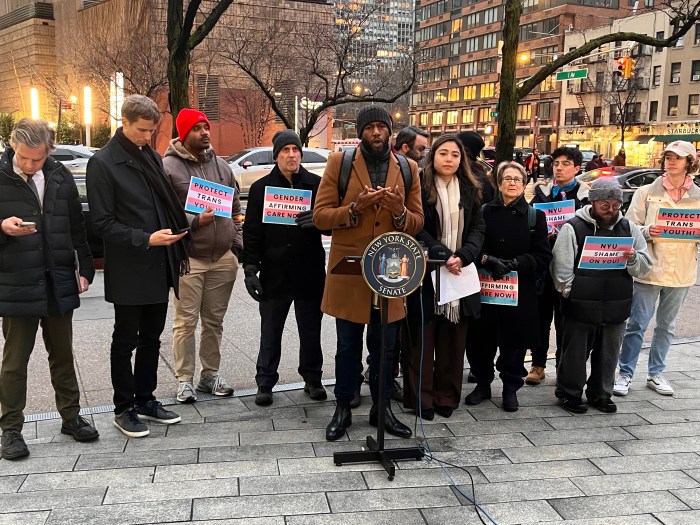
The MTA is taking its plan to elevate bus service to a whole new level.
Commuters on Monday got a sneak peek at the authority’s double-decker bus that will be tested out on a Staten Island express route — a small part of NYC Transit president Andy Byford’s expansive Bus Action Plan unveiled Monday to improve service.
“You wouldn’t use it on a local route because the dwell time for people to go up and down the stairs would be too long,” Byford said during a news conference in front of the bus, parked outside MTA headquarters in lower Manhattan. “But the advantage of the double-decker is that you can carry more people in comfort over those long-distance, limited-stop routes.”
The bus, wrapped in the state flag’s blue and gold, will be tested on the X17J route that runs from Staten Island’s South Shore to midtown Manhattan. The bus tops out just under 12 feet 10 inches tall, according to its manufacturer, the British company Alexander Dennis, making it just short enough to fit under the Lincoln Tunnel’s 13-foot clearance.
The double-decker, to begin its pilot in the coming weeks, features 81 seats compared to the 57 on the MTA’s typical express bus. The height means the buses could be only realistically deployed on a select number of express routes on Staten Island that run through New Jersey, according to Darryl Irick, the head of the MTA’s bus division.
Curious passers-by walking along Broadway stopped to take a tour of the bus on Monday. Many of them approved of the idea, including Manhattan resident Regina Edelman, who took a selfie in front of the bus.
“I think it’s great because we can’t just be idling — we have to try and change,” said Edelman, 60.
Calvin Bacchus, 43, said he thought the design could lead to improvements in service.
“The overcrowding now is just too much for people — it’s a real problem,” said Calvin, who lives in Stapleton, Staten Island.
Others were unimpressed by the tight confines; riders over 6 feet tall will have to duck to pass through the isles.
But Jean Ryan, of Bay Ridge, who uses a motorized wheelchair, said she approved of the design because it relies on a wheelchair ramp that unfolds at the front door of the bus instead of the side lift that is on other express buses.
“It’s much better than the lift — I hope that in my lifetime, that they get rid of the high, outside lifts, which are a pain to use,” she said. “The lifts can malfunction and some operators don’t know how to use them.”
The MTA also displayed a few of its electric buses currently being tested in city — part of Byford’s plan to move to a zero-emission fleet. In addition to the double-decker, the MTA plans to use passenger counters to give express riders advanced information on seat availability in approaching buses.
“One mark of my tenure and [MTA managing director] Ronnie [Hakim’s] leadership will be that the MTA will be much more open to new ideas, much more innovative,” Byford said. “So I think it’s good that we do look at — constantly look at — the cutting edge of technology, but also to consonantly, continuously, relentlessly provide improvements, tangible improvements for our customers, whether they be on Access-A-Ride, the bus service, or the subway service.”




